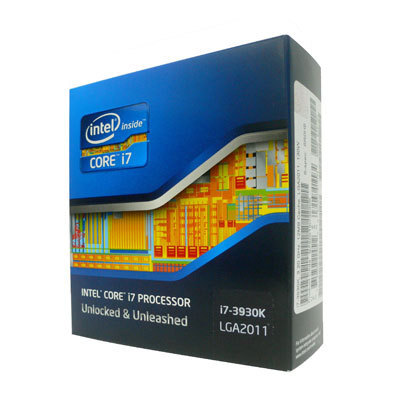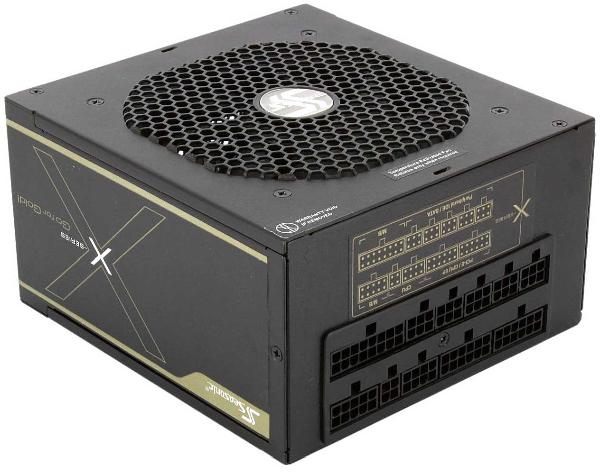Holiday 2012 Workstation Buyer's Guide
by Zach Throckmorton on December 10, 2012 3:20 AM EST- Posted in
- Guides
- AMD
- Intel
- Ivy Bridge
- Piledriver
- Holiday 2012
Overview
I started building computers a decade ago to help make ends meet while I was an undergraduate. For the first time, I built more workstations than gaming boxes, HTPCs, and even budget systems in 2012. Whether this is a reflection of my social network getting older, or fleets of ageing Core 2 Duo and Core 2 Quad machines finally getting too long in the tooth to be truly serviceable, the rise of mobile gaming, or something else, I'm not entirely sure. But as readers of AnandTech know, the desktop computing segment is shrinking, and one area where the desktop is still undisputed king is in productivity.
Though there are many powerful laptops that can crunch through large datasets and have screens and keyboards that you can actually use for an entire day of work, these systems remain very expensive compared to similarly-performing desktops, and there are no truly mobile devices that can match the raw computational power, capabilities, and flexibility of a desktop. (Yes, I know: Clevo sells some notebooks with desktop CPUs, but we've looked at a couple of those over the years and always came away wanting something more.)
 Fortunately for workstation users, 2012 has produced many tangible benefits. While Intel's Sandy Bridge E CPUs remain the most powerful mainstream workstation CPUs, Ivy Bridge chips brought what Intel called a "Tick+" compared to Sandy Bridge CPUs. Last year, AMD introduced its Bulldozer-based processors, which were disappointing. This year, AMD has narrowed the gap with its Piledriver CPUs. Though Piledriver chips don't match Intel's highest-end performance processors, at certain price points, Piledriver CPUs are worth consideration because they can outperform equivalently priced Intel products (with a few qualifications).
Fortunately for workstation users, 2012 has produced many tangible benefits. While Intel's Sandy Bridge E CPUs remain the most powerful mainstream workstation CPUs, Ivy Bridge chips brought what Intel called a "Tick+" compared to Sandy Bridge CPUs. Last year, AMD introduced its Bulldozer-based processors, which were disappointing. This year, AMD has narrowed the gap with its Piledriver CPUs. Though Piledriver chips don't match Intel's highest-end performance processors, at certain price points, Piledriver CPUs are worth consideration because they can outperform equivalently priced Intel products (with a few qualifications).
As for storage, stabilization of hard drive production in the wake of the Southeast Asia floods has brought massive 3TB and 4TB hard drive prices back down into the mainstream. Developments in the SSD market have brought reliable, high performance solid state storage down to prices at which they're pragmatic choices for uses in addition to solely operating system and application drives. DDR3 RAM prices have plummeted, to the point where you can sometimes pick up a whopping 32GB of desktop memory for about $100. Finally, competition has widened the field in terms of cases to include more than a handful of players in the premium workstation case market—including newer designs that are not only functional, but actually look nice and are quiet, too.
 One important consideration in deciding whether to build a workstation is exactly that—whether to build a workstation. Arguably, you can build a workstation that is more reliable than anything you can buy from a large-scale integrator like Dell, HP, or Lenovo. Similarly, you can build a workstation better suited to your needs than a pre-built system. The question is whether you can provide the same level of support as a large company.
One important consideration in deciding whether to build a workstation is exactly that—whether to build a workstation. Arguably, you can build a workstation that is more reliable than anything you can buy from a large-scale integrator like Dell, HP, or Lenovo. Similarly, you can build a workstation better suited to your needs than a pre-built system. The question is whether you can provide the same level of support as a large company.
Many of AnandTech's readers have the DIY know-how to quickly diagnose computer-related issues (whether software or hardware induced), and many of us keep spare parts on hand, so we can fix a computer even before the next business day. However, do you have time to spend a few hours troubleshooting a broken down computer in the middle of a work day? Do you want to deal with that aggravation? Do you have spare systems already online that you can use while your primary productivity system is offline for a day or two?
These are important questions, and only you can answer them. If you'd rather not be your own technical support, it's best to stick with a pre-built that comes with support for your important computer. If your computer is more than important (i.e. mission critical), DIY is rarely a good idea. That is, the more important your productivity work is, the more likely it is you'll be better off going the pre-built route and avoiding the issues involved in providing your own part and support.
If you're sold on the idea of building your own workstation, the next general issue to consider is whether your workloads benefit from GPU computing. Succinctly, graphics cards are much more proficient than central processors at certain types of tasks; namely, those that are heavily parallelized. These tasks include scientific computing (such as Monte Carlo simulations, many bioinformatics analyses, and climate data work), audio signal processing (including speech processing), cryptography and cryptanalysis, as well as many functions used in video and image processing. One of the more popular software titles that makes extensive use of GPGPU computing is Adobe's Creative Suite 6; Adobe has an informative FAQ on GPGPU computing in CS6. Again, only you know whether powerful GPGPU capabilities make sense in your system, so for each of the builds we detail, we recommend a graphics card in line with the overall system budget (though you might want to spend more or less depending on your needs).
In this guide we outline four workstations, priced from $850 up to over $2,000. We start with the least expensive builds on the next page.










49 Comments
View All Comments
Blibbax - Monday, December 10, 2012 - link
What made you pick the i7-3770 over the cheaper Xeon E3-1230V2?stickmansam - Monday, December 10, 2012 - link
Yeah I was wondering about that tooslatanek - Monday, December 10, 2012 - link
From what I read on the 1st page of this guide I understand it's a guide focused on consumer/enthusiast grade workstation where your work is not involved in serious money/critical appliances. I mean, c'mon guys is that so hard to get? It's written right there in the introduction. So stop just outsmarting each other out with statements about what is and isn't a workstation. Nowadays a workstation doesn't even mean that much - what is that different in a modern workstation vs. enthusiast PC? Frankly, not much. It's basically the same architecture, layout etc. As I've said before - go and read again, it's written right there:"If your computer is more than important (i.e. mission critical), DIY is rarely a good idea."
Am I the only one who read the whole article before posting a comment? I get the impression that some of you just looked at the components choice lists and went on trolling.
As a reply I say:
"anything that runs ECC is not worth writing about, cause guys using those "things" are too focused on their job to even bother reading about it".
Nah, just kidding ;-)
Cheers
JonnyDough - Monday, December 10, 2012 - link
"Though Piledriver chips don't match Intel's highest-end performance processors, at certain price points, Piledriver CPUs are worth consideration because they can outperform equivalently priced Intel products (with a few qualifications)."However, the difference in power usage may make the Intel system still a better deal.
beaker7 - Monday, December 10, 2012 - link
Cupcake article. The parts in the high end build are neither high-end nor workstation class. A 3930k could be used in a budget situation, I suppose.Current high end is:
E5-2687w Xeons
SuperMicro dual LGA 2011
1600 Mhz ECC RAM
etc
lunadesign - Friday, December 14, 2012 - link
+1000 (I totally agree)Uncognoscenti - Wednesday, December 12, 2012 - link
Would appreciate some elaboration regarding criteria for selecting Windows 7 over Windows 8 in this application.kadajawi - Wednesday, December 19, 2012 - link
I find it hard to believe that you do not specify a CPU cooler in that build. The Intel stock heatsink is loud, and sometimes even inadequate. I have had i7 overheat/slow down because the CPU just gets too hot. Switched it with a Xigmatek Gaia, and the thing was not only silent, but also so cool that the thing could be overclocked from 2.66 to 3.8 GHz (I did also switch the lousy case for a Xigmatek case).Also the 3570K can be an interesting CPU for a workstation. All 3D workstations I have built use the 3570K on a Z77 board by Asus (P8Z77-M), cooling is provided by a CoolerMaster 212 EVO, encased in a Xigmatek Asgard XP, power supply is a Seasonic S12-II Bronze 620 (one of which died within a few months). The systems run pretty good and are rock solid at 4.2 GHz. For OS and software the Intel 320 SSD was used. Impossible to hear unless under full load. The performance easily rivals the i7 PCs that were already there.
harth234 - Friday, August 9, 2013 - link
More guides please!It's been half a year!